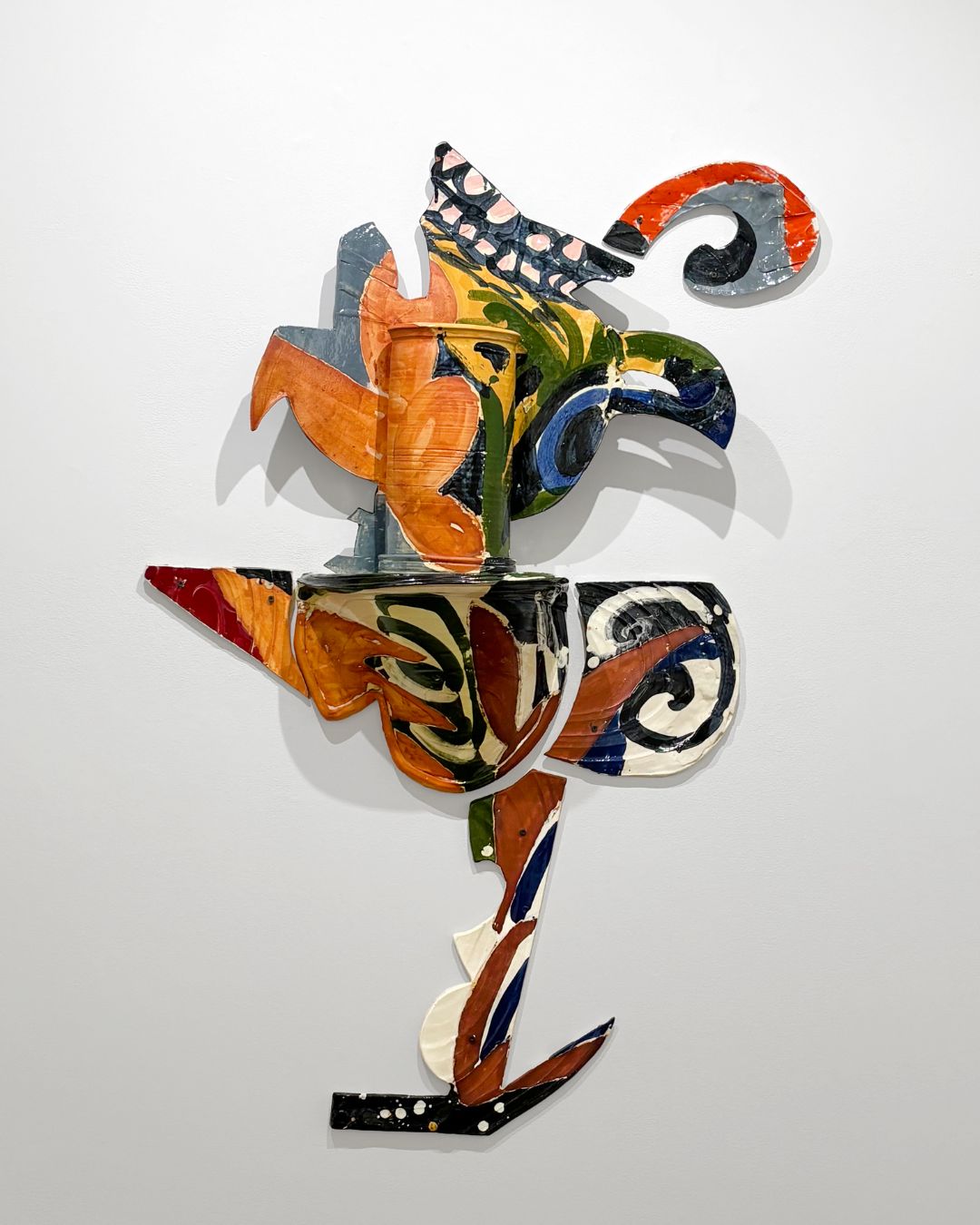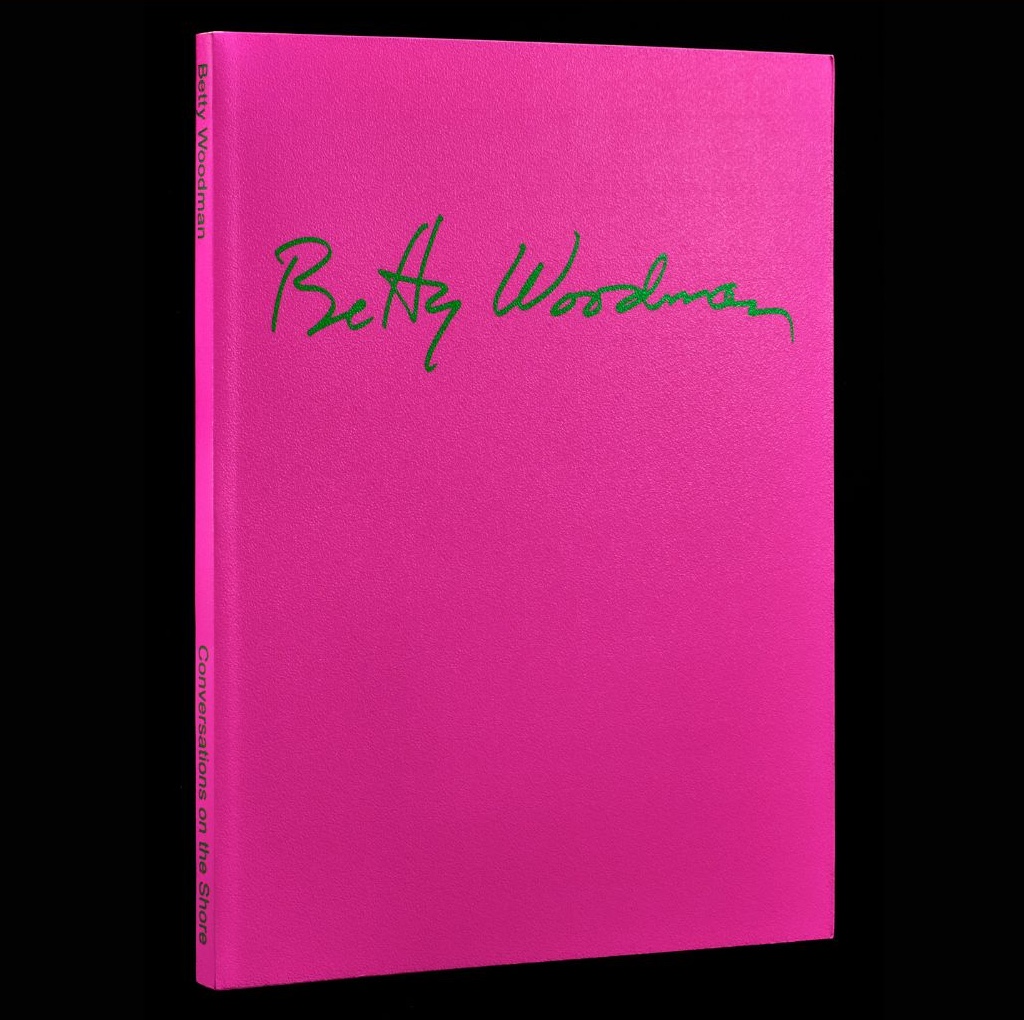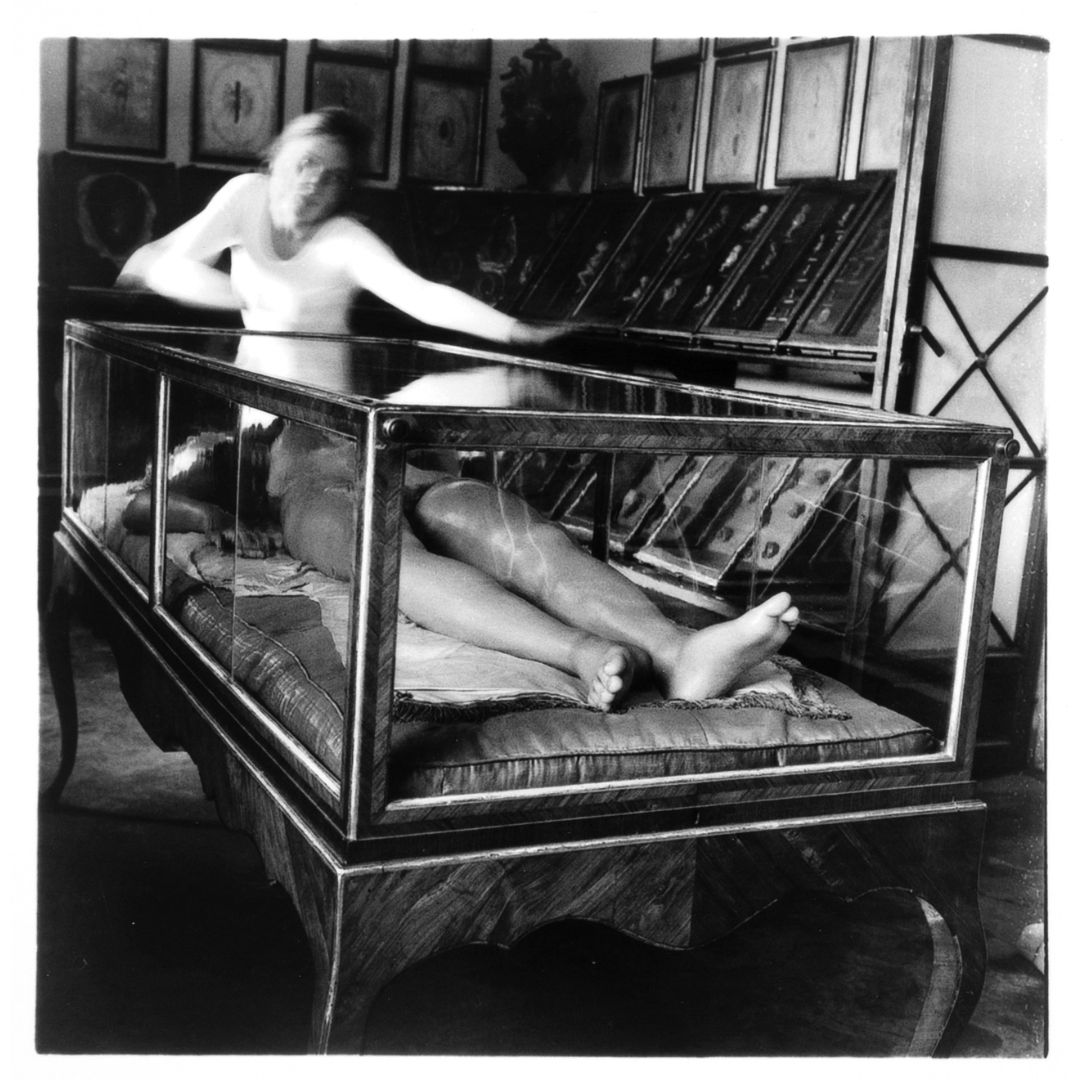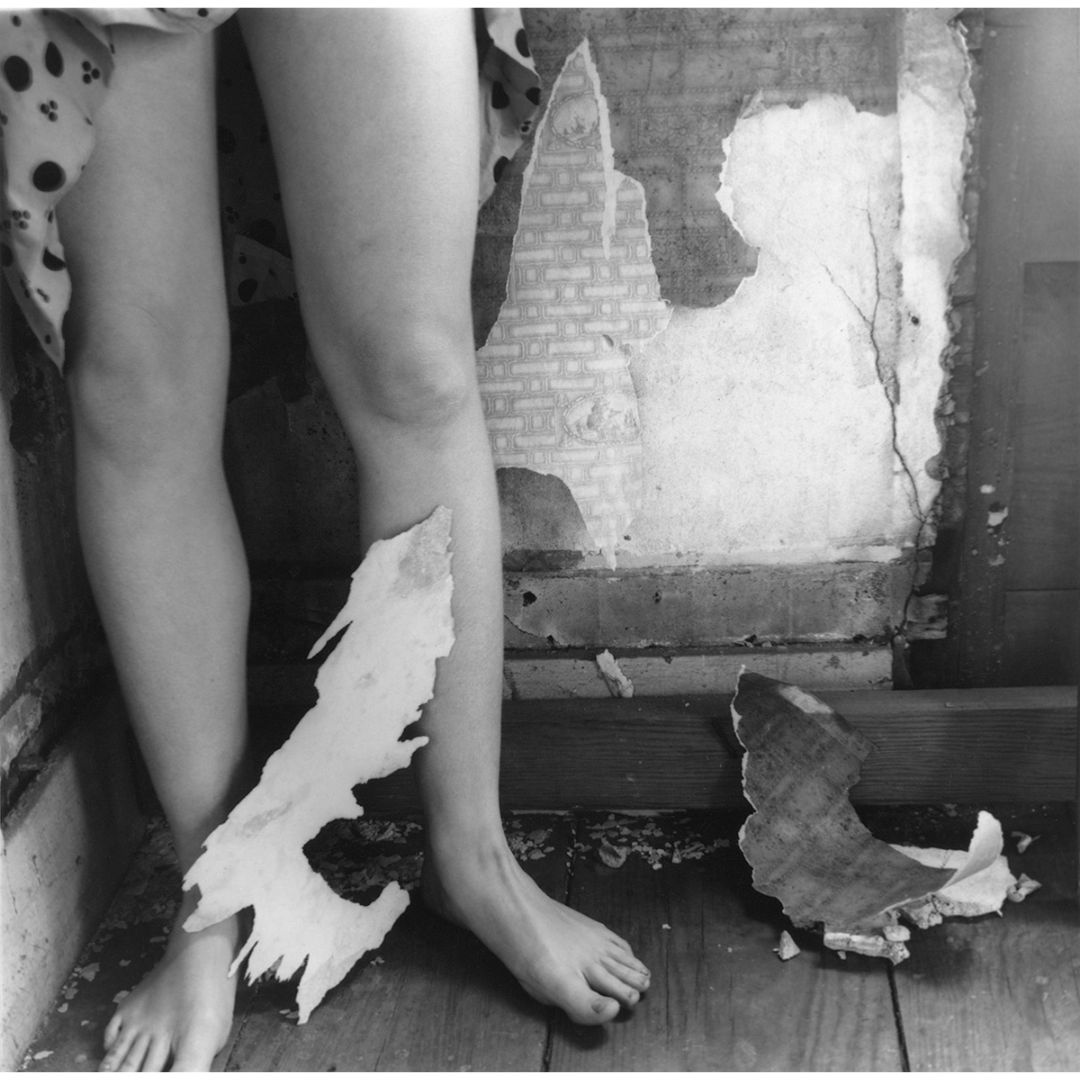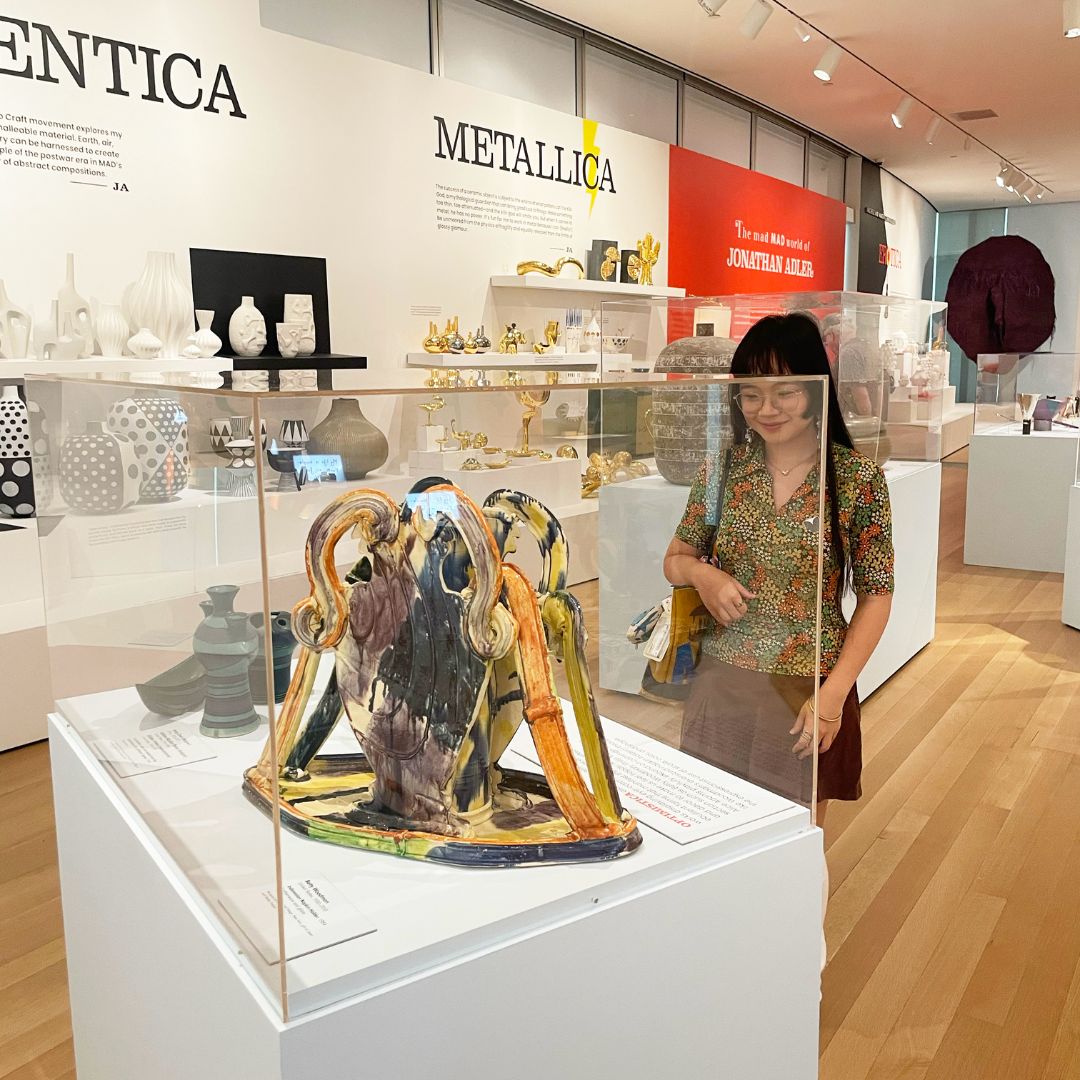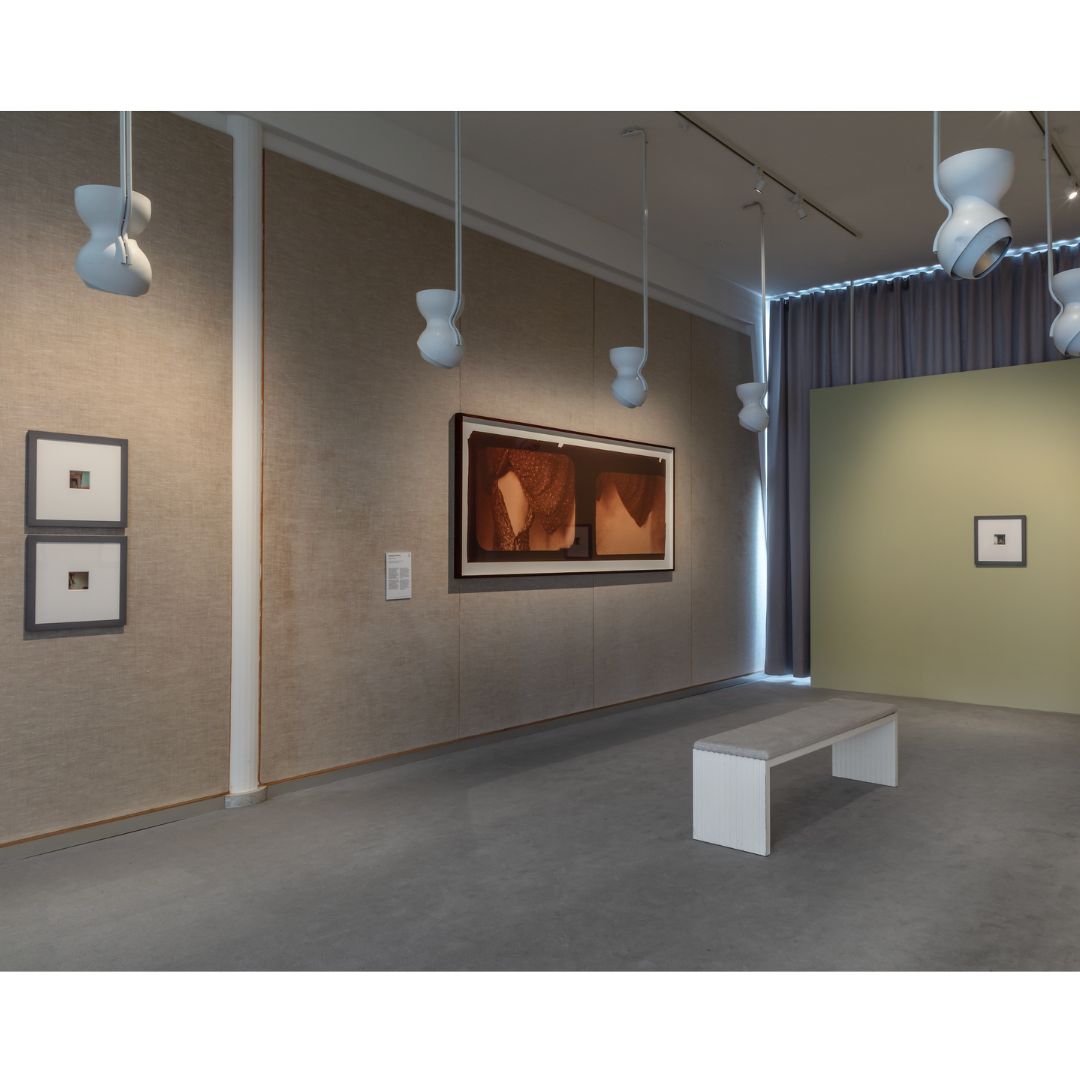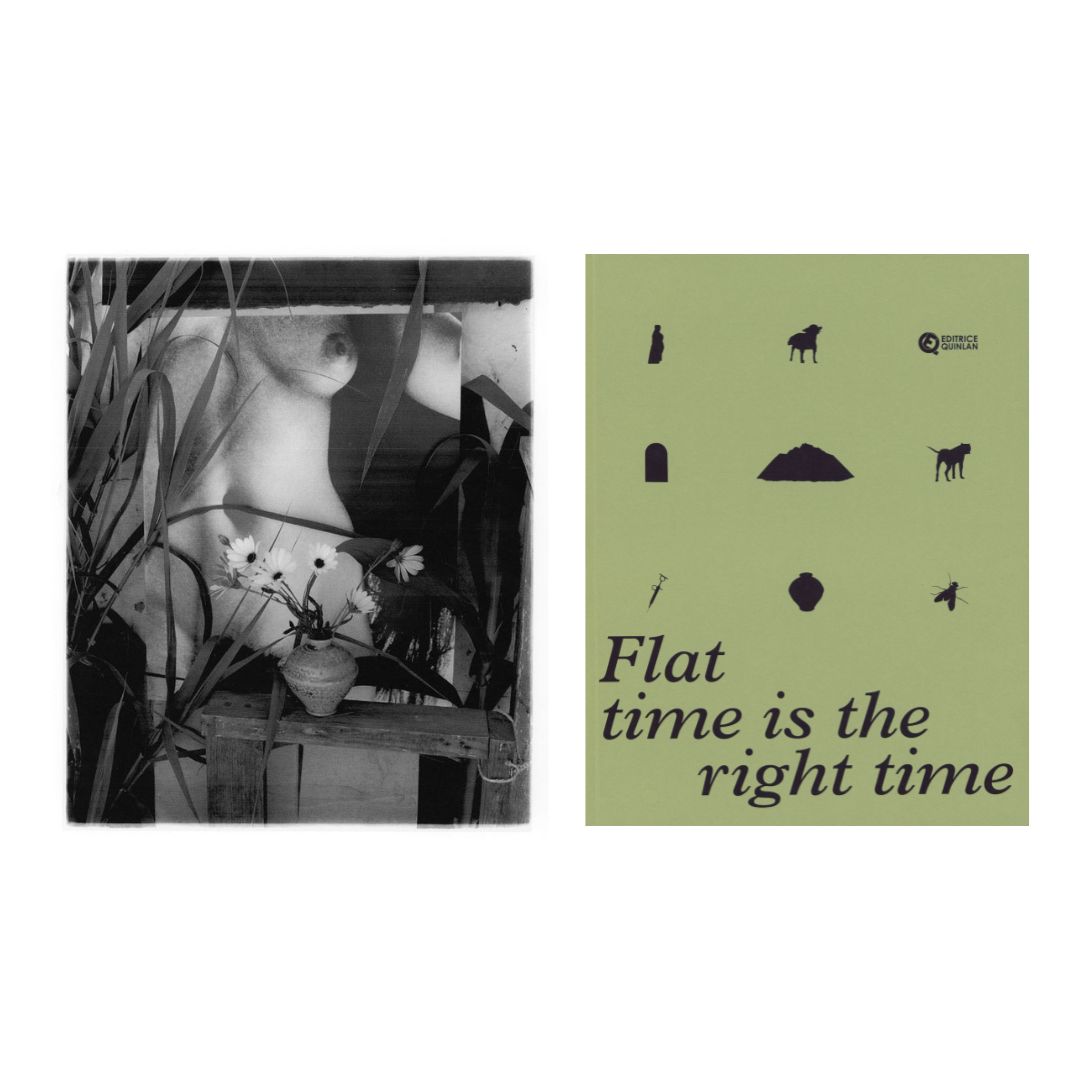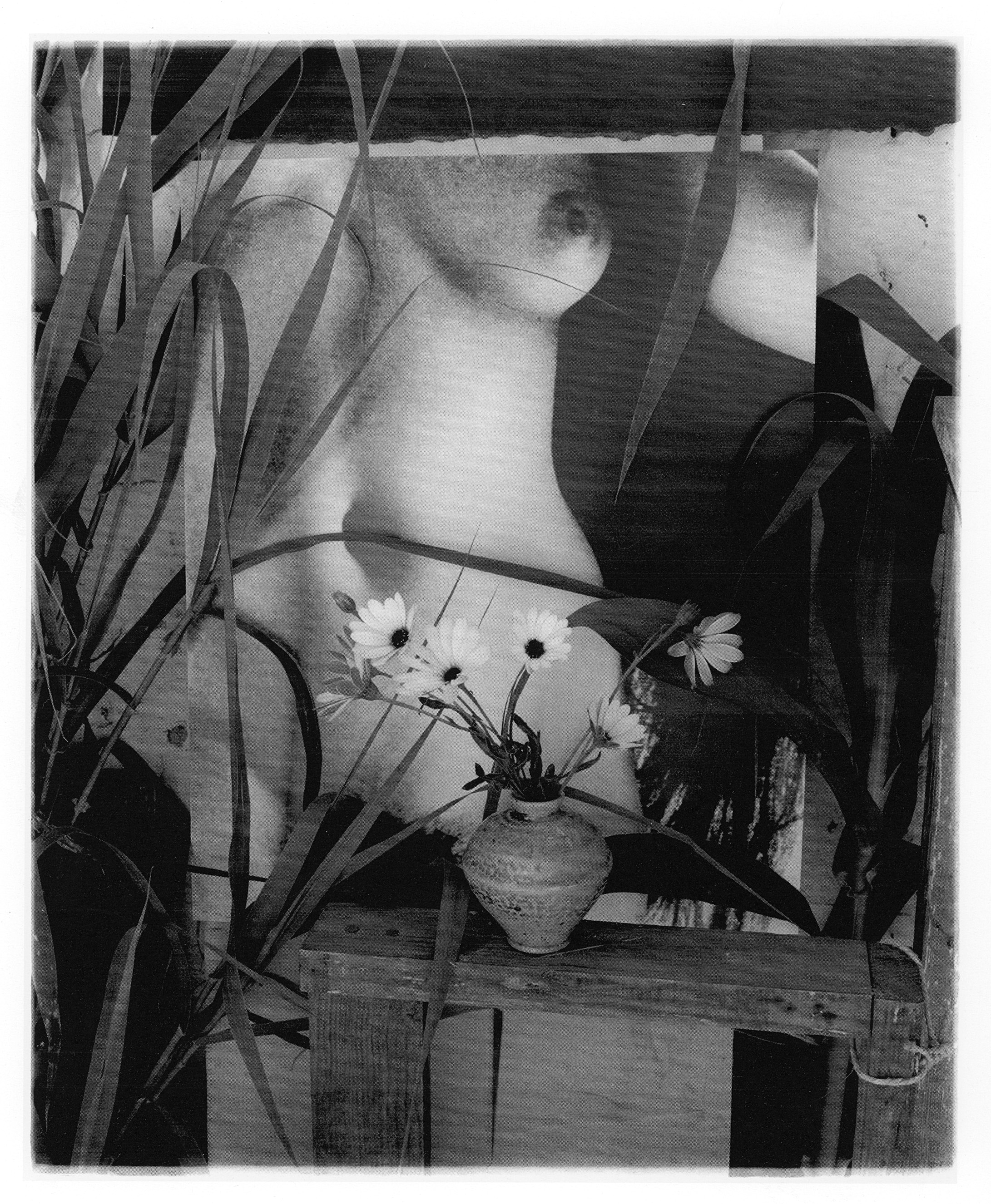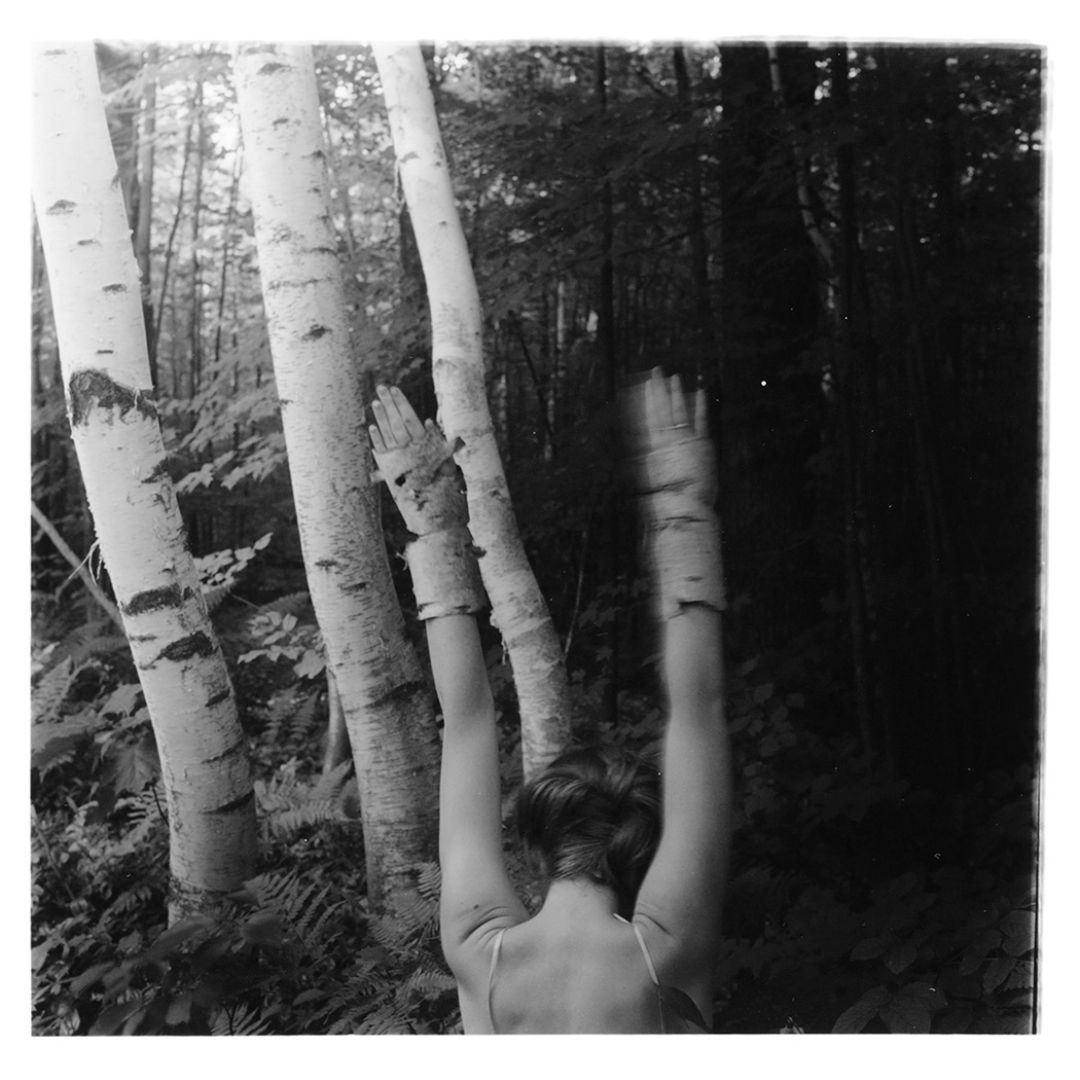News
Announcements From the Foundation
L to R: Betty Woodman. "Balustrade Relief Vase: 30," 1991, 55 x 38 x 8 1/2 in. Glazed earthenware, epoxy resin, lacquer, paint © Woodman Family Foundation / Artists Rights Society (ARS), New York | Installation view, "Drop, Cloth," Hollis Taggart Gallery, New York, 2025. Image courtesy Hollis Taggart Gallery | "Drop, Cloth." New York: Hollis Taggart, 2025
Betty Woodman. "Balustrade Relief Vase: 30," 1991, 55 x 38 x 8 1/2 in. Glazed earthenware, epoxy resin, lacquer, paint © Woodman Family Foundation / Artists Rights Society (ARS), New York. Image courtesy Hollis Taggart Gallery.
ON VIEW: Betty Woodman in "Drop, Cloth," Hollis Taggart Gallery, New York, New York, 2025
Curated by Glenn Adamson and Severin Delfs, “Drop, Cloth” traces a 50-year lineage of draping in contemporary art. As Delfs explains, drapery is presented here "as a flexible visual language that connects perception to material form,” explored through approaches that are “diaphanous and ephemeral," "material and sculptural," and "pictorial and painterly.”
L to R: “Betty Woodman: Conversations on the Shore, Works from the 1990s.” Designed by Laura Coombs. Published by David Kordansky Gallery, 2024. Images 1, 5-8 courtesy of AIGA.
“Betty Woodman: Conversations on the Shore, Works from the 1990s.” Designed by Laura Coombs. Published by David Kordansky Gallery, 2024. Image courtesy of AIGA.
“Betty Woodman: Conversations on the Shore, Works from the 1990s” selected for awards
Thrilled to announce that “Betty Woodman: Conversations on the Shore, Works from the 1990s”—the exhibition catalogue designed by Laura Coombs for Woodman’s 2022 solo show at David Kordansky Gallery—has been named a Winner of AIGA 50 Books | 50 Covers of 2024.
L to R: “Untitled,” c. 1976, 4 11/16 x 4 5/8 in. Gelatin silver print | "Self-Portrait at Thirteen,” c. 1972, 6 3/4 x 6 11/16 in. Gelatin silver print | “Untitled,” c. 1977-78, 5 15/16 x 5 7/8 in. Gelatin silver print | “The Woman Question 1550–2025,” edited by Alison M. Gingeras. The University of Chicago Press, 2026. All works by Francesca Woodman © Woodman Family Foundation / ZAIKS, Warsaw.
Francesca Woodman. “Untitled,” c. 1976, 4 11/16 x 4 5/8 in. Gelatin silver print © Woodman Family Foundation / ZAIKS, Warsaw
ON VIEW: Francesca Woodman in “The Woman Question 1550-2025,” Museum of Modern Art in Warsaw, Warsaw, Poland, 2025
Curated by Alison M. Gingeras, this exhibition brings together nearly 200 works that defy the myth of women’s absence from art history. Spanning 500 years—from the Renaissance and Baroque to the 20th century—it offers a powerful visual history of women’s centuries-long "emancipation."
WFF Housing Stability Grant Awarded
The first round of funds have officially been sent to recipients of the inaugural WFF Housing Stability Grant for Artists (WFF HSG)!
L to R: 1: "Lightning" or "Lightning Legs," 1976, 5 x 5 1/8 in. | 2: "Space²," 1976, from the "Space²" series, 5 1/8 x 5 1/16 in. | 3: "Untitled," 1977, 3 1/16 x 3 1/8 in. | 4: Installation view, “Women Photographers 1853-2018," National Gallery of Australia, Canberra, Australia, 2025. Photo courtesy and copyright National Gallery of Australia. All lifetime gelatin silver prints. Collection of the National Gallery of Australia. Works by Francesca Woodman © Copyright Agency, Sydney
Francesca Woodman. "Lightning" or "Lightning Legs," 1976, 5 x 5 1/8 in © Woodman Family Foundation / Copyright Agency, Sydney
ON VIEW: Francesca Woodman in “Women Photographers 1853-2018,” National Gallery of Australia, Canberra, Australia, 2025
Curated by Anne O’Hehir, Magdalene Keaney, and Shaune Lakin, this exhibition explores how women have reshaped the photographic landscape through works spanning more than 160 years.
L to R: 1-3, 5, 6: Installation views, “The Mad MAD World of Jonathan Adler,” Museum of Arts and Design, 2025 | 4: Betty Woodman. “Indonesian Napkin Holder,” 1984, 18 1/2 x 22 1/2 x 10 1/2 in. Glazed earthenware © Woodman Family Foundation / Artists Rights Society (ARS), New York | 7: Installation view, “The Mad MAD World of Jonathan Adler" © Museum of Arts and Design
Installation view, “The Mad MAD World of Jonathan Adler,” Museum of Arts and Design, 2025
ON VIEW: Betty Woodman in "The Mad MAD World of Jonathan Adler,” Museum of Arts and Design, New York, New York, 2025
Curated by potter, interior designer, and author Jonathan Adler, this vibrant exhibition at MAD brings together over 60 works from the museum’s permanent collection, juxtaposed with Adler’s own iconic designs.
L to R: 1, 5: Installation views from “Places to Dream,” Kunsten Museum of Modern Art Aalborg, Aalborg, Denmark, 2025 © Niels Fabæk, Kunsten Museum of Modern Art Aalborg | 2: “Untitled,” 1980. Archival pigment print | 3: “Untitled,” 1979, 3 3/8 x 3 1/2 in. Digital chromogenic print | 4: “Untitled,” 1979, 3 3/8 x 3/12 in. Digital chromogenic print | 6: “Space2, 1976, from the Space2 series. 5 7/8 x 5 5/8 in. Gelatin silver print. All artworks by Francesca Woodman © Woodman Family Foundation / VISDA, Copenhagen
Installation view from “Places to Dream,” Kunsten Museum of Modern Art Aalborg, Aalborg, Denmark, 2025 © Niels Fabæk, Kunsten Museum of Modern Art Aalborg
ON VIEW: Francesca Woodman in "Places to Dream," Kunsten Museum of Modern Art Aalborg, Aalborg, Denmark, 2025
This September marks the final opportunity to view Places to Dream, an exhibition featuring photographs by Francesca Woodman alongside works by Cindy Sherman, Ana Mendieta, Birgit Jürgenssen, and Nan Goldin, among others.
L to R: 1: “Still Life, Little Vase, Vivienne,” 2003, 23 3/4 x 19 3/4 in. | 2: “Dialogue of the Dresses” or “Antella Still Life,” 1999, 16 x 20 in. | 3: “Still Life with Picture of Eleanora,” 2009, 23 3/4 x 20 in. | 4: “Still Life with Rachel” or “Childhood Memories,” 1997, 20 x 16 in. | 5: “Vatican Mysteries,” 1996, 42 x 33 in. | 6: “Kitty and Rabbit on the Classical Past” or “Rococo Still Life,” 1993, 20 x 16 in. | 7: “Italian Still Life,” 2000, 24 x 30 in. | 8: “Saskia Disrobing in Still Life” or “Saskia and Fruit,” 2003, 20 x 24 in. All gelatin silver prints. All artworks by George Woodman © Woodman Family Foundation / Artists Rights Society (ARS), New York
George Woodman. “Still Life, Little Vase, Vivienne,” 2003, 23 3/4 x 19 3/4 in. Gelatin silver print © Woodman Family Foundation / SIAE, Rome & Cover of "Flat time is the right time"
George Woodman's still life photography in "Flat time is the right time: Bodies, Places and Still Life from Pier Luigi Gibelli’s Collection," 2025
George Woodman’s still life photography bears unmistakable traces of his decades-long career as a painter: His compositions—re-photographed prints and negatives, fruits and drapery, sculptures and paintings collapsed into a single pictorial space—are at once witty and rich in art historical allusion.
L to R: 1: Francesca Woodman, “Untitled,” 1980, Gelatin silver print, 4 1/2 x 4 1/2 in. | 2: Gian Lorenzo Bernini, “Apollo and Daphne,” 1622–1625, Galleria Borghese, Rome | 3: Francesca Woodman, “Untitled,” 1980, Gelatin silver print, 3 15/16 x 4 in. | 4: Francesca Woodman, “Untitled,” 1980, Gelatin silver print, 10 5/8 x 13 1/2 in. | - 5: Alexander Pope’s sketch of the shield of Achilles. MS 4808 © The British Library | 6: Cy Twombly, “Fifty Days at Iliam: Shield of Achilles,” 1978 © Cy Twombly Foundation | 7: Cover of Parentheses of Reception. All Francesca Woodman artworks © Woodman Family Foundation / BILDKUNST, Bonn
Francesca Woodman, “Untitled,” 1980, Gelatin silver print, 4 1/2 x 4 1/2 in. (11.43 x 11.43 cm) © Woodman Family Foundation / BILDKUNST, Bonn & Cover of Parentheses of Reception
Brooke Holmes on Francesca Woodman in "Parentheses of Reception," 2025
Published in May 2025, the anthology "Parentheses of Reception" explores how the parenthesis, a rhetorical figure of speech and thought, can offer fresh insights into classical reception studies by conceptualizing Greco-Roman antiquity as being both “inserted into” and “remaining apart” from the present.
L to R: 1: "Space²," 1976, from the "Space²" series, 5 1/16 x 4 13/16 in. | 2, 3, 7: Installation views, “Medardo Rosso: Inventing Modern Sculpture,” Kunstmuseum Basel, Basel, Switzerland, 2025. Photo: Max Ehrengruber. Image courtesy Kunstmuseum Basel | 4: “Legs,” 1976, 5 1/4 x 5 3/16 in. | 5: “Untitled,” c. 1975-78, 6 1/4 x 6 9/16 in. | 6: “#1” or “House #1” or “Abandoned House,” 1976, from the “Abandoned House” series, 5 11/16 x 5 3/4 in. | 8-9: Installation views, “Medardo Rosso: Inventing Modern Sculpture,” Kunstmuseum Basel, Basel, Switzerland, 2025. Photo: Julian Salinas. Image courtesy Kunstmuseum Basel | All gelatin silver prints. Artworks by Francesca Woodman © Woodman Family Foundation / ProLitteris, Zurich
Francesca Woodman. "Space²," 1976, from the "Space²" series, 5 1/16 x 4 13/16 in. Gelatin silver print © Woodman Family Foundation / ProLitteris, Zurich
ON VIEW: Francesca Woodman in "Medardo Rosso: Inventing Modern Sculpture,” Kunstmuseum Basel, Basel, Switzerland, 2025
This Art Basel, visit the Kunstmuseum Basel to see Francesca Woodman’s photographs featured in "Medardo Rosso: Inventing Modern Sculpture."
Installation view, "George Woodman: A Democracy of Parts, Paintings 1966-1978," DC Moore Gallery, New York, 2025
Exhibition Video for "George Woodman: A Democracy of Parts, Paintings 1966-1978," DC Moore Gallery, New York, 2025
Watch the exhibition video to listen to Rebecca Lowery, Curator of Exhibitions at the Wexner Center for the Arts at The Ohio State University, discusses George Woodman's evolving use of tessellations and color.
L to R: “Untitled,” c. 1977-78, 8 x 8 1/16 in. | “Untitled,” 1977, 5 5/16 x 5 3/8 in. | Installation view from ““Blur / Obscure / Distort: Photography and Perception,” Norton Museum of Art, West Palm Beach, Florida, 2025. Photo courtesy Norton Museum of Art. All gelatin silver prints. All artworks by Francesca Woodman © Woodman Family Foundation / Artists Rights Society (ARS), New York.
Francesca Woodman. “Untitled,” c. 1977-78, 8 x 8 1/16 in. Gelatin silver print © Woodman Family Foundation / Bildupphovsrätt i Sverige, Stockholm
ON VIEW: Francesca Woodman in "The Subterranean Sky: Surrealism in the Moderna Museet Collection" and “Blur / Obscure / Distort: Photography and Perception,” 2025
Works by Francesca Woodman are currently on view in two museum exhibitions about Surrealism and photography's relationship with truth at the Moderna Museet and Norton Museum of Art, respectively.



